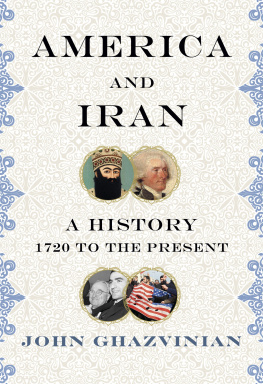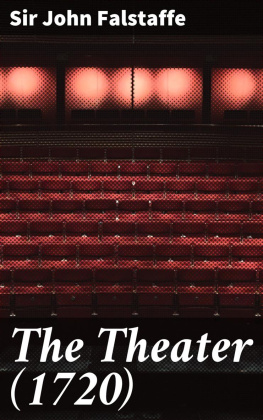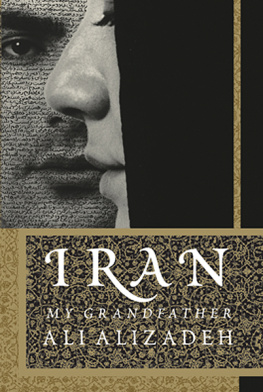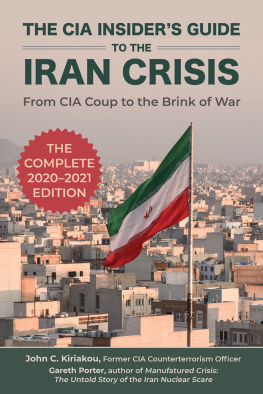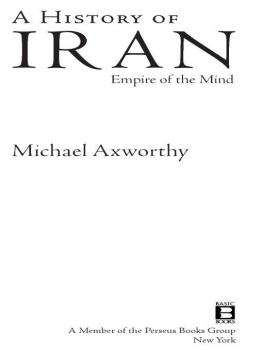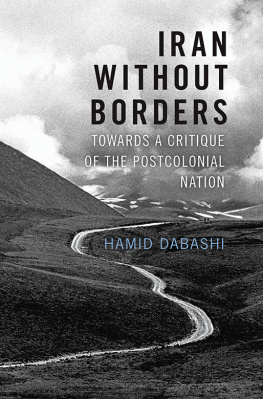John Ghazvinian - America and Iran: A History, 1720 to the Present
Here you can read online John Ghazvinian - America and Iran: A History, 1720 to the Present full text of the book (entire story) in english for free. Download pdf and epub, get meaning, cover and reviews about this ebook. publisher: Oneworld Publications, genre: Politics. Description of the work, (preface) as well as reviews are available. Best literature library LitArk.com created for fans of good reading and offers a wide selection of genres:
Romance novel
Science fiction
Adventure
Detective
Science
History
Home and family
Prose
Art
Politics
Computer
Non-fiction
Religion
Business
Children
Humor
Choose a favorite category and find really read worthwhile books. Enjoy immersion in the world of imagination, feel the emotions of the characters or learn something new for yourself, make an fascinating discovery.

- Book:America and Iran: A History, 1720 to the Present
- Author:
- Publisher:Oneworld Publications
- Genre:
- Rating:5 / 5
- Favourites:Add to favourites
- Your mark:
- 100
- 1
- 2
- 3
- 4
- 5
America and Iran: A History, 1720 to the Present: summary, description and annotation
We offer to read an annotation, description, summary or preface (depends on what the author of the book "America and Iran: A History, 1720 to the Present" wrote himself). If you haven't found the necessary information about the book — write in the comments, we will try to find it.
America and Iran: A History, 1720 to the Present — read online for free the complete book (whole text) full work
Below is the text of the book, divided by pages. System saving the place of the last page read, allows you to conveniently read the book "America and Iran: A History, 1720 to the Present" online for free, without having to search again every time where you left off. Put a bookmark, and you can go to the page where you finished reading at any time.
Font size:
Interval:
Bookmark:
America and Iran
ALSO BY JOHN GHAZVINIAN
Untapped: The Scramble for Africas Oil

To my parents, of course,
who lived too much of this history
When the lingering sorrow of separation lifts, The nightingale will tear back into the rose garden Its throat filled with song

HAFEZ, FOURTEENTH-CENTURY PERSIAN POET
The Iranian revolution is a fact of history, but between American and Iranian basic national interests there need be no permanent conflict.
RONALD REAGAN,
PRESIDENT OF THE UNITED STATES, NOVEMBER 1986
Contents
Introduction
For a historianfor any storyteller, reallythe challenge is always where to begin.
Does the story begin on the day the star-crossed lovers meet? Does it begin, as it does in the immortal poetry of Omar Khayyam, on the secluded riverbank, with a jug of wine and a loaf of bread, and that moment of blossoming, freshly emergent romance? For those telling the story of Iran and America, alas, it does not. This is a story that always seems to begin at the very end, at the moment when swords are drawn and voices are raisedwhen tempers are flaring and the lovers have gone their separate ways.
In the United States, so often, the story begins in 1979, with those famous grainy television picturesthe bearded revolutionaries climbing the wall of the U.S. embassy in Tehran and taking sixty-six Americans hostage, leading them blindfolded and bewildered into the street for all the world to see. It begins with a radical, hateful, anti-American revolution, and all the menacing symbolism and fanatical Middle Eastern blood-thirst that image conjures up. The very moment that America and Iran broke off tiesthe moment that ended more than a century of warm and friendly relationshas become Day One, Chapter One, Verse One. The Book of Genesis.
It is an odd way to write history, thisbeginning at the end. But this is the way the story is told in the United States. A catalog of Irans sinsranging from support for terrorism to pursuit of nuclear weaponsgenerally follows in the 1980s, 1990s, and 2000s, with the accusation that all these activities stem ultimately from the radicalism of the Islamic Republic that was created forty years ago, and the ideology of hatred and hostility it has cultivated ever since. The Iran hostage crisis of 1979 has become a kind of original sinthe moment the serpent slipped into the Garden of Eden and brought an end to the comfortable illusion of American global invincibility. The unforgivable has become the unforgiven. And nothing has been the same since.
In Iran, meanwhile, the story usually begins in 1953, with an original sin of a different kind. It begins with Mohammad Mosaddeqa name largely forgotten by Americans, but a national hero to many Iranians. It begins with that hot afternoon in August 1953, when the CIA engineered a coup against Mosaddeq, the electedand wildly popularprime minister of Iran. It begins with the thugs and newspaper editors who were hired by the CIA to create trouble on the streets and give the army the cover it needed to remove the prime minister. Mosaddeqa great admirer of democracy and human rightshad represented the hope of a generation. It was a generation that had adored Americaa generation raised on years of John Wayne movies and big, stylish Chevroletsbut that quickly grew to hate it. Another ending, treated as a beginning.
This is the way the story is told in Iran. After the 1953 coup, Irans young kingthe shahreturned from a brief exile and spent the next twenty-five years increasing his dictatorial grip on the country, bolstered by billions of dollars in weapons and training from the United States. His feared secret police jailed and tortured thousands, the royal family pilfered spectacular sums from the Iranian treasury, corrupt courtiers engaged in a lavish and opulent lifestyle, as one American president after another toasted the shah for his steadfast friendship. And thenonly thenin 1979, did the hated and hollow regime finally collapse, brought down by millions of revolutionaries streaming through the streets, a handful of them so angry that they seized the U.S. embassy and took its employees hostage.
So it has remained, for forty years. Historylike almost everything elsehas become a casualty in the long-running war of words between Iran and the United States. For more than forty years, those who like to look for someone to blame, or something to defend, have stood in their respective corners, trading accusations about the relative criminality of the CIA coup and the embassy hostage crisis, taking very little interest in the idea that there might be a richer, more sophisticated way to look at the history that has transpired between these two nations. For more than forty years, history has been treated as a competitive sportjust another arena of contestation in the seemingly endless array of disagreements and accusations that have been hurled back and forth between Iran and the United States. And for more than forty years, endings, ruptures, and angry disagreementsrather than beginnings, attractions, and initial infatuationshave become the starting point for every conversation about Iran and America.
We are all much poorer for it.

The history of U.S.-Iranian relations did not begin in 1979, and it did not begin in 1953. It began hundreds of years agowhen the United States was still a handful of British colonies and Iran was still known to the outside world as the Persian Empire. And it began with something much more interesting than hostile acts and mutual accusations about original sins.
When we choose to take this long-term approach to history, we discover something surprising. For hundreds of years, it turns out, well before their governments had any serious high-level interaction, the peoples of Iran and America looked at each other with a remarkable degree of fascination, admiration, warmth, and benevolence. In the 1720s colonial American newspapers wrote at length, and with great sympathy, about the political affairs of the Persian Empire. In the 1790s, Thomas Jefferson and John Quincy Adams studied Persian history as they looked for inspiration and guidance on how to run their new nation. From the 1850s to the 1920s, Persian newspapers constantly urged their readers to learn from Americas example and develop their country into a progressive, prosperous constitutional republic. In 1919 there were reports of pro-American riots on the streets of Tehran.
This is where the story of Iran and America really begins. And this is what has been missing most acutely from all our discussions of the subject. Well before governments in Tehran and Washington began to step on each others toes in our own lifetimeswell before the Great Satan and Axis of Evil speeches, well before Mosaddeq and the hostage crisis and Ayatollah Khomeinirelations between these two countries were animated by a spirit of common respect and mutual understanding.
It is this spiritfar more than any supposed original sinsthat should mark the beginning of their interaction in the pages of history. And it is out of a desire to bring this history to light that this book has been written.

For the past forty years, Iran and the United Statesonce the closest of allieshave had almost no relationship at all. There have been no meetings between heads of state, no exchange of diplomats, no official channels for the two governments to express their concerns and views to each other. There have been no embassies, no trade missions, virtually no tourists, no student exchange programs, no military coordination or communication. Only very recently has there even been any contact between officials of the two countries.
Next pageFont size:
Interval:
Bookmark:
Similar books «America and Iran: A History, 1720 to the Present»
Look at similar books to America and Iran: A History, 1720 to the Present. We have selected literature similar in name and meaning in the hope of providing readers with more options to find new, interesting, not yet read works.
Discussion, reviews of the book America and Iran: A History, 1720 to the Present and just readers' own opinions. Leave your comments, write what you think about the work, its meaning or the main characters. Specify what exactly you liked and what you didn't like, and why you think so.

